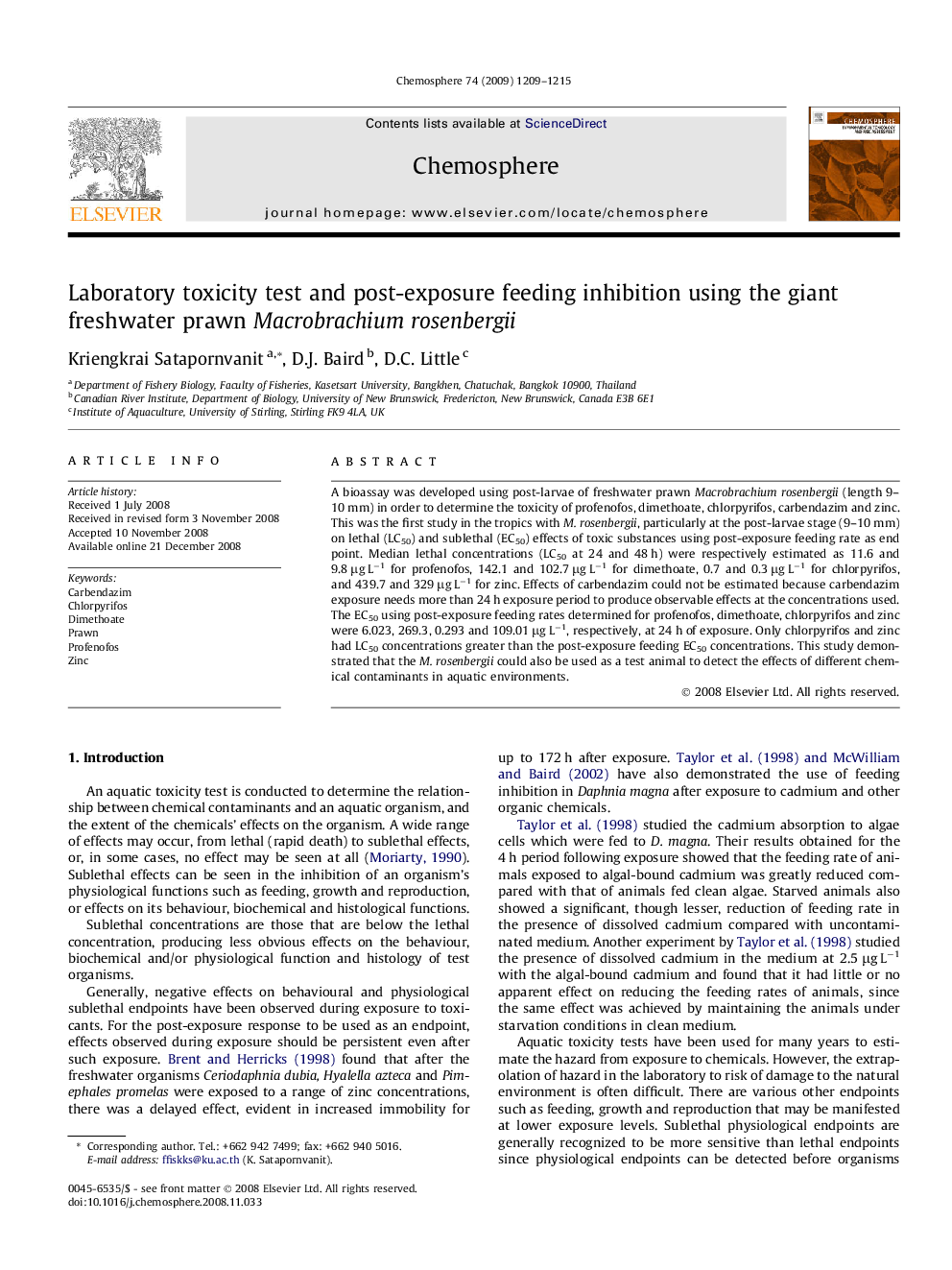| Article ID | Journal | Published Year | Pages | File Type |
|---|---|---|---|---|
| 4413349 | Chemosphere | 2009 | 7 Pages |
A bioassay was developed using post-larvae of freshwater prawn Macrobrachium rosenbergii (length 9–10 mm) in order to determine the toxicity of profenofos, dimethoate, chlorpyrifos, carbendazim and zinc. This was the first study in the tropics with M. rosenbergii, particularly at the post-larvae stage (9–10 mm) on lethal (LC50) and sublethal (EC50) effects of toxic substances using post-exposure feeding rate as end point. Median lethal concentrations (LC50 at 24 and 48 h) were respectively estimated as 11.6 and 9.8 μg L−1 for profenofos, 142.1 and 102.7 μg L−1 for dimethoate, 0.7 and 0.3 μg L−1 for chlorpyrifos, and 439.7 and 329 μg L−1 for zinc. Effects of carbendazim could not be estimated because carbendazim exposure needs more than 24 h exposure period to produce observable effects at the concentrations used. The EC50 using post-exposure feeding rates determined for profenofos, dimethoate, chlorpyrifos and zinc were 6.023, 269.3, 0.293 and 109.01 μg L−1, respectively, at 24 h of exposure. Only chlorpyrifos and zinc had LC50 concentrations greater than the post-exposure feeding EC50 concentrations. This study demonstrated that the M. rosenbergii could also be used as a test animal to detect the effects of different chemical contaminants in aquatic environments.
